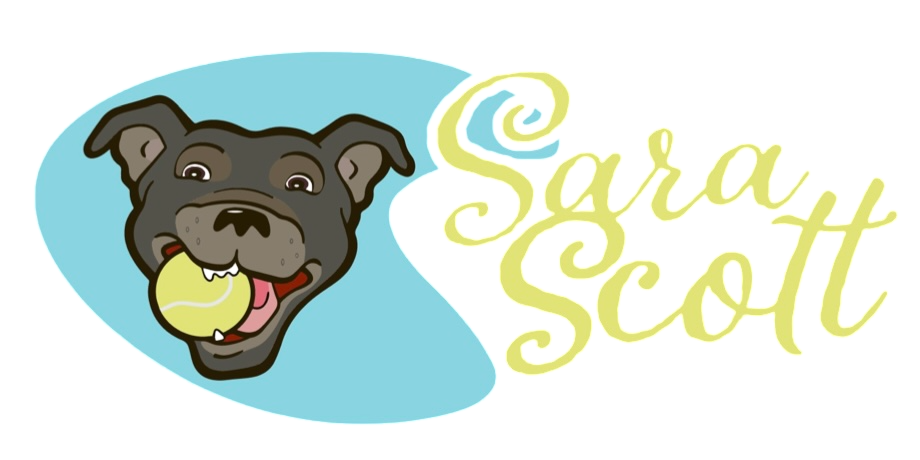Separation Anxiety Training Through the Holiday Season
- Sara Scott
- Dec 9, 2024
- 4 min read
The holiday season sparkles with magic and bustles with activity - from the warmth of candlelit gatherings to the cheerful chaos of loved ones spilling through your front door. While humans delight in the twinkling lights and familiar carols floating through the air, this whirlwind of celebration can be overwhelming for dogs who struggle with separation anxiety. The predictable rhythm of daily life dissolves into a symphony of changes: your usual morning walk becomes a rushed affair between gift wrapping sessions, the comfort of regular mealtimes shifts with party schedules, and your faithful companion watches with worried eyes as suitcases emerge from storage. These disruptions - from the echo of unfamiliar footsteps in your home to the constant flow of new faces and changing schedules - can leave your anxious dog feeling adrift in a sea of uncertainty, even with you by their side. But take heart! With thoughtful planning and gentle persistence, you can help your pup navigate this festive maze without undoing the careful progress you've made together. And if your training routine stumbles beneath the weight of holiday commitments, remember that January arrives like a fresh blanket of snow, offering the perfect clean slate to resume your journey together.

Should You Pause Training During the Holidays?
It might be tempting to take a complete break from separation anxiety training during the holiday season, especially with your routine in flux. But the truth is, you don’t have to stop practicing altogether. Instead, aim to adjust your schedule and expectations.
Rather than training 4-5 days a week, try scaling back to a couple of sessions per week. Even shorter or less frequent practice can help maintain your dog’s progress. If you’re pressed for time, get creative: plan sessions around quieter moments in your day or focus on more manageable scenarios like shorter durations. Every little bit counts, and consistent practice—even in small doses—will make it easier to pick things up again in January.
What About Training in a New Environment?
If you’re staying somewhere other than home, like at a family member’s house or an Airbnb, you might wonder if you should continue separation anxiety training there. Keep in mind that your dog’s training is tied to their home environment, so progress made in a new location is not likely to translate back to your home. While it’s okay to give it a try, know that you’re more likely to see success with activities like relaxation exercises or decompression walks that promote a parasympathetic nervous system response. This state helps your dog recover from stress, lower their heart rate, and return to a more balanced, regulated emotional state, setting the foundation for future training success.
That said, if you’re frequently visiting the same place—like a close friend’s home—it might be worth starting some training sessions in that environment. Just remember to set your expectations: your dog’s comfort level in this new setting will likely differ from their progress at home.
Is It Worth Starting Separation Anxiety Training in December?
Absolutely! Starting now can make a big difference for you and your dog. Building a foundation of small, successful steps before the new year will put you ahead of the game when routines return to normal in January. Even if the holiday season feels chaotic, practicing now—even just a little—will help you and your dog ease back into the swing of things.
Reassessing After the Holidays
Once January rolls around and life settles back into its usual rhythm, you might notice your dog needs a brief adjustment period. Some dogs won’t be bothered at all by the holiday season’s changes, while others may need a slightly easier week of depaerture practice to reacclimate to the routine. Be prepared to reassess and adjust your training plan if needed. Start with slightly shorter durations to help your dog regain confidence and momentum.
Conclusion
The holiday season doesn’t have to mean hitting pause on separation anxiety training. With some flexibility and a bit of planning, you can keep your dog’s progress steady while still enjoying the festivities. Whether you’re practicing a few sessions a week or focusing on general relaxation exercises, every bit of effort counts. Remember, it’s okay to rest when needed and pick things back up when life calms down.
Let this season be one of balance, where both you and your dog feel supported through the hustle and bustle. By starting now, you’re setting the stage for success—not just for the holidays, but for the months ahead.
Does your dog struggle with separation anxiety, especially during the busy holiday season? You don’t have to navigate it alone. My bespoke coaching programs are designed to help you and your dog work through separation anxiety with personalized, step-by-step guidance tailored to your unique situation. Together, we’ll create a plan that fits your lifestyle and sets your dog up for success.
If you’re ready to take the first step toward a calmer, more confident dog, click here to learn more about my coaching programs. Let’s work together to create a happier and more harmonious home for you and your pup.

Comments